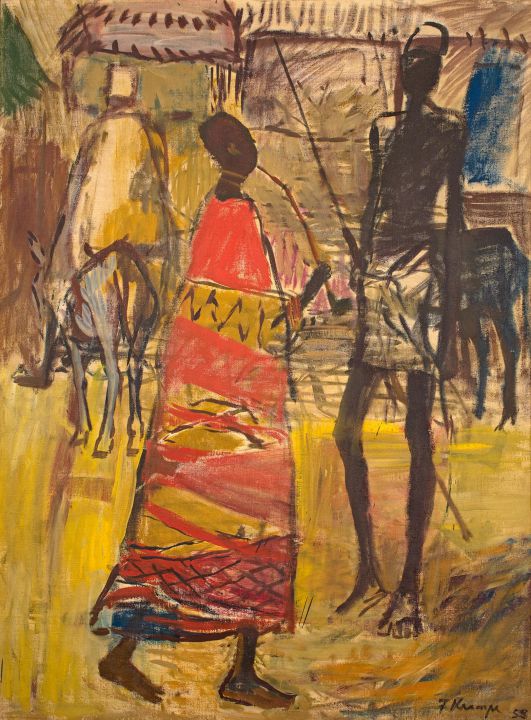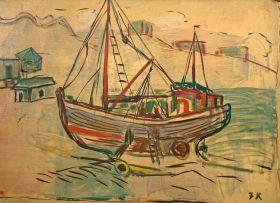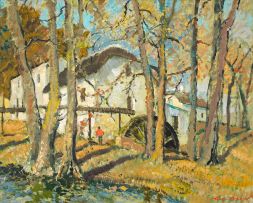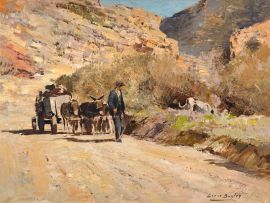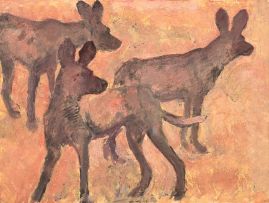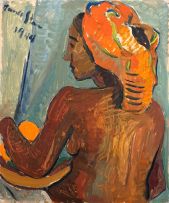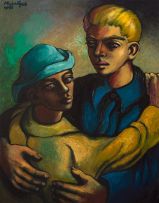Important South African and International Art, Decorative Arts & Jewellery
Live Auction, 15 October 2018
Art: Evening Session
Incl. Buyer's Premium & VAT
About this Item
signed and dated 58; signed with the artist's initials on the reverse; further inscribed with the title in German on a Peter and Regina Strack label with collection number 37 adhered to the reverse
Notes
Best known for his large wildlife studies which can be found in most of the major Municipal and National collections in South Africa and Namibia, Fritz Krampe imbued his subjects, whether animal or human, with equal gravitas and vitality. He was described in art and life as "restless and rugged, unafraid of nature… All the virile power of his personality was compressed into the works he produced."1
He rejected traditional art practice in that his artworks, whether drawn, painted or printed, are the product of both his sketches and his long periods of observation in situ. Drawings and watercolours done while travelling would later be revisited in his studio where large canvases and stone lithographs would be created. His skill as a fearless draftsman enabled him to distill his subjects to their true visual essence and he strove to capture the energy of a scene rather than simply reproducing it.
In this lot, Village Scene, recto; Fishing Boat, verso,2 this east African village and its occupants are deftly described in Krampe's use of cross-hatched colour applied in a unique shorthand. Everything Krampe recalled from his observation of this scene (from sketches and memory) is accounted for in his transposing of the canvas: the brightly coloured cloth and long smoking pipe of the female figure, the thatched roofs of the dwellings, the tall male figure carrying a hunting spear or staff, the animals, the dry grass and sand. Once satisfied that he had captured the necessities in his visual shorthand he moved swiftly on to the next element.3 This masterwork should not be dismissed as an unfinished or hurried composition lacking formal attention as Fritz Krampe remains a unique visual voice in the art history of southern and east Africa.
Phillippa Duncan
1. Esmé Berman (1994). Art & Artists of South Africa, Halfway House: Southern Book Publishers. Page 238
2. most likely painted from sketches he completed during his extensive travels in Southern, Northern and Eastern Africa in 1957/58.
3. It was also commonplace for Krampe to use both sides of a canvas - if a composition failed to ignite he would simply stop what he was doing and start afresh. The reverse of this work contains a perfectly preserved but unfinished work: Fishing Boat.
Provenance
The Late Peter and Regina Strack Collection.
Literature
Peter Strack (2007). Timeless Encounters: Fritz Krampe, A Painter's Life in Africa. Windhoek: Kuiseb Verlag. Page 100, 153 and illustrated in colour on page 112.
